

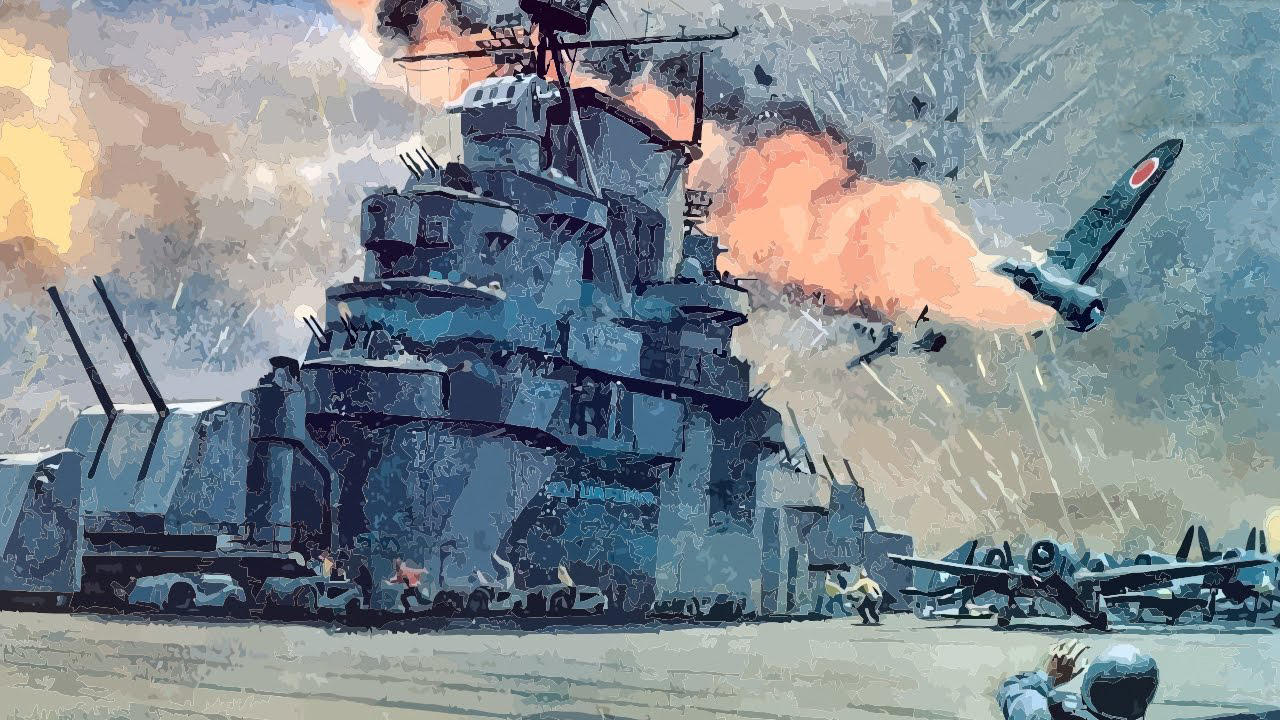
Kamikaze Pilots: Japan’s Suicide Squad in WWII
Origins of Kamikaze
The Mongols invaded Japan in 1281. The powerful warlord Kublai Khan led the attack. Just when the Mongols were on the verge of defeating the Japanese, a destructive typhoon swept through the land. This typhoon, named Kamikaze(Divine Wind) by the Japanese, eliminated the whole Mongol army.
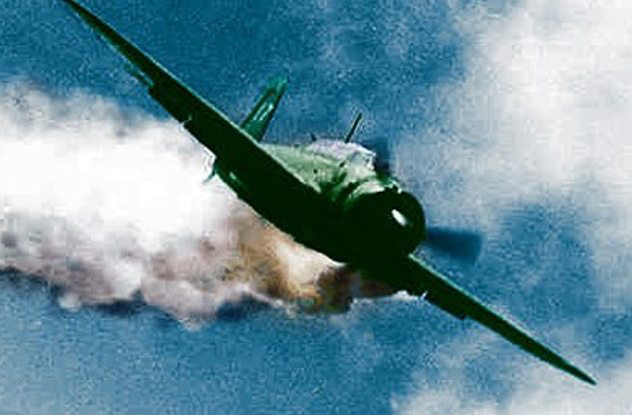
Lt Yoshinori Yamaguchi’s Yokosuka D4Y3 (Type 33 Suisei) “Judy” in a suicide dive against USS Essex.
After the fall of Saipan (July 1944), the Japanese restored the memory of Kamikaze by ascribing it to the suicide attack missions of their air force. The commander of Japan’s First Air Fleet in the Philippine Islands, Vice Admiral Takashiro Ohnishi, had pointed out that the best way to inflict maximum damage on the warships of the Allies was to deliberately crash aircraft into them.
He also pointed out that one plane crash targeting a ship could cause more destruction than 10 planes firing relentlessly at it. Based on this combat observation, it was decided that pilots would deliberately crash their planes into the warships of the Allies.
Kamikaze aircraft were essentially pilot-guided explosive missiles, purpose-built or converted from conventional aircraft. Pilots would attempt to crash their aircraft into enemy ships in what was called a “body attack” in planes laden with some combination of explosives, bombs, torpedoes and full fuel tanks; accuracy was much better than a conventional attack, the payload and explosion larger. A kamikaze could sustain damage which would disable a conventional attacker and still achieve its objective. The goal of crippling or destroying large numbers of Allied ships, particularly aircraft carriers, was considered to be a just reason for sacrificing pilots and aircraft.
The First Major Kamikaze Strike
In the Battle of Leyte Gulf, Philippines, the Kamikaze Special Attack Force began the first of its suicide missions. On October 25th, 1944, 5 Zero airplanes were escorted to the target by the top Japanese pilot Hiroyoshi Nishizawa. USS St. Lo, an escort carrier, was the first important warship that was sunk by a Kamikaze attack.
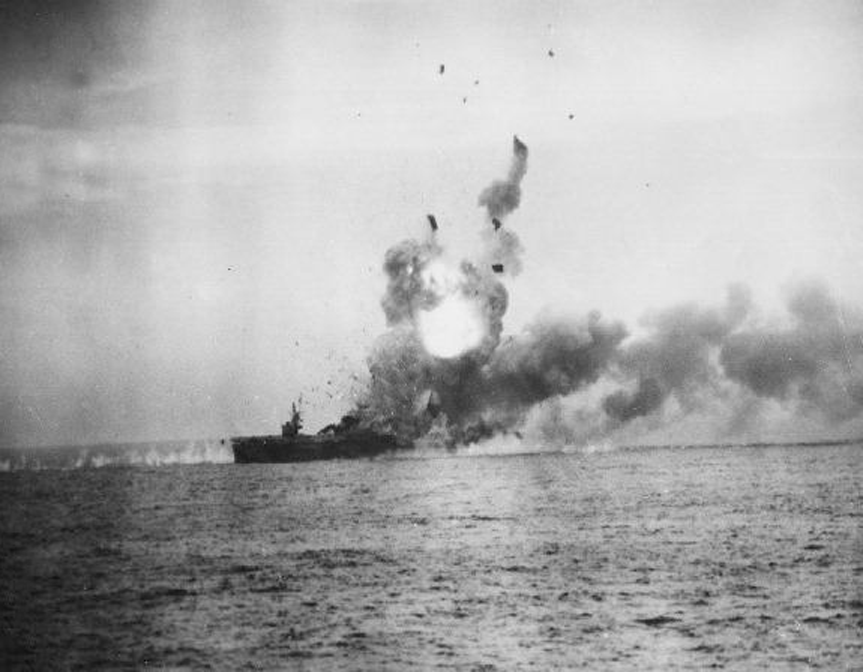
St Lo attacked by kamikazes, 25 October 1944.
The Kamikaze strike resulted in massive fires that led to an explosion in the ship’s bomb magazine. The carrier sunk within an hour. Kamikaze pilots scored several direct hits that day. They caused severe damage to other warships of the Allies as well.
The Average Kamikaze Pilot
The average Kamikaze pilot was a university student. Loyalty to the Japanese Emperor, family, and nation were his key motivations. He was in his early 20s and pursuing science. He prepared for his worthy destiny by writing farewell poems and letters to his loved ones, receiving a 1000-stitch sash, and taking part in a final ceremony.
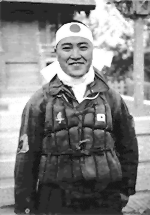
Ensign Kiyoshi Ogawa, who flew his aircraft into the USS Bunker Hill.
The 1,000-stitch sash was a garment in which thousand different women put in one symbolic stitch each. The final ceremony included a drink of spiritual concoction that’d ensure success in the mission. Then, he’d wedge himself between 500-pound bombs.
The Key Motivation for Kamikaze Pilots
The tradition of death instead of defeat, capture, and perceived shame was deeply entrenched in Japanese military culture. It was one of the primary traditions in the samurai life and the Bushido code: loyalty and honor until death.
The Kamikaze pilots were told that they’d be fighting for God, their Emperor. And their supreme act would bring deliverance to Imperial Japan as it’d done in the 13th century.
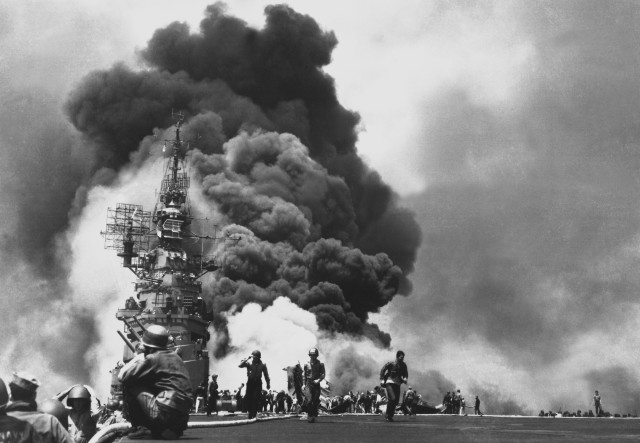
USS Bunker Hill hit by two Kamikazes in 30 seconds on 11 May 1945 off Kyushu. Dead – 372. Wounded – 264.
Calls for Kamikaze pilots received a great response. For every available Japanese plane, there were three applicants. Experienced pilots were refused the chance to become Kamikaze pilots because they were needed to train the raw volunteers.
The 5-Point Oath for All Kamikaze Pilots
Like other regular military personnel, the Kamikaze pilots were also indoctrinated with the following oath:
• Loyalty is your obligation.
• Propriety is your way of life.
• You must esteem military valor highly.
• You must have the highest regard for righteousness.
• You must live a simple life.
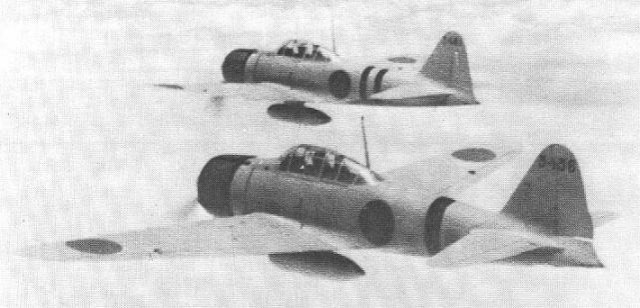
Mitsubishi A6M2 "Zero" Fighter
The Mitsubishi A6M2, nicknamed the Zero, was the Kamikaze pilot’s premium machine. Its range was a decent 1,930 miles. The Zero could hit a maximum speed of 332 mph. This flying coffin was almost 30 feet long, and its wingspan was about 39 feet. The Japanese modified this aircraft to accommodate one 500-pound bomb.
The Zero had been the main strike plane during the Pearl Harbor attack. But other sophisticated planes forced the Zero to this humble role.
The Kamikaze Pilots’ “Big Day”
April 6, 1945, is perhaps, the biggest day in terms of Kamikaze attacks in WWII. Over 350 Kamikaze aircraft made a desperate dive at the Allied fleet in the crucial Battle for Okinawa. This simultaneous Kamikaze wave drove several Allied sailors almost insane.
Twenty Kamikaze aircraft made a simultaneous lunge toward USS Laffey. Her gunners took out nine within seconds, but six rammed into her. Fortunately, the USS Laffey had a world-class Commanding Officer. The ship came back to fight in the Korean War.
Summary
Although Kamikaze attacks dominated the final Japanese defense of Okinawa, the Allies gained victory at a heavy price. Though the numbers are disputed, approximately 2.800 kamikaze pilots died. They sunk 34 U.S. ships, damaged 368, killed 4.900 sailors, and wounded 4.800.
Imperial Japan had set aside several thousand Kamikaze planes in the event of an attack on the Japanese mainland. The two atomic bombs, 'Little Boy' (Hiroshima) and 'Fat Man' (Nagasaki), ensured that this wouldn’t be necessary. Kamikaze pilot trainees are alive even today 70 years after the war to tell the tale. They’re in their Nineties, though.
Sources: defence.pk and World War II Gravestone

